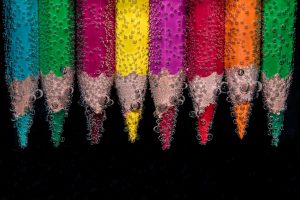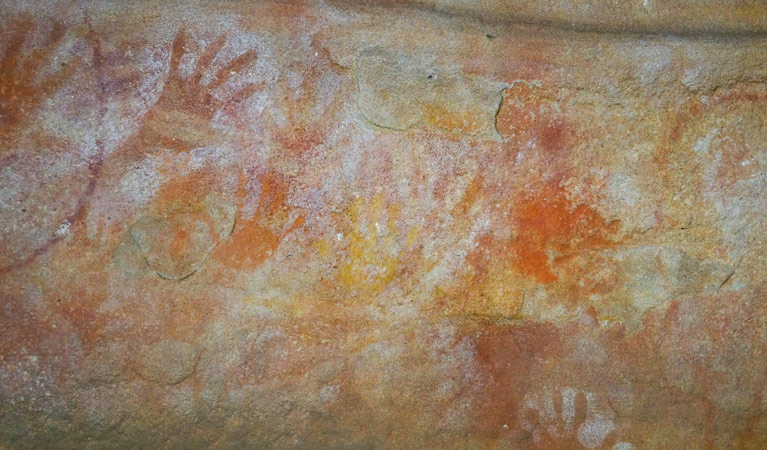Do the Arts Even Matter?
The earth without art is just “eh.” – Demetri Martin

I mean, I don’t know the hungriest you’ve ever been, but even at my worst, a canvas covered in acrylic didn’t sound too appetizing.
So why do we have the arts? Should we just get rid of them for more practical and functional endeavors? Let’s see what science has to suggest.
THE ORIGIN OF ART
In previous posts, I have discussed some of the research on our ancient homo sapiens ancestors, and the very first cave paintings are dated to about 40,000 years ago. Researchers actually believe they could be even older, but regardless, it’s suffice to say:
We humans have been making art for a very long time…

But, why did we ever even start practicing these expressive behaviors?
At the very least, one could argue that they’re fun to do. Even Confucius once expressed, “Music produces a kind of pleasure which human nature cannot due without.” However, no other species in the world shows consistent evidence of things like dancing for fun.
And one reason for this is that no other animal is quite so social an animal as us.
THE PURPOSE OF ART

In non-human primates (e.g., chimpanzees), a prominent method for forming social ties is through intense one-on-one grooming. This mutually pleasurable physical contact releases endorphins in the primates’ brains, and this neurochemical promotes emotional closeness.
However, humans live in groups too large for one-on-one grooming to be a feasible social strategy. Even in our ancestors’ smaller groups, there was close to 50 people per “band.” Even more, these bands would occasionally come together to form short-term “mega-bands” when pooling local resources or information, making their numbers even larger.
Therefore, there simply is not enough time in the world to pick the bugs out of all these people’s hair. Then yet, how do you get a whole bunch of individually motivated organisms to form social cohesion and closeness?
Why, through song and dance.
To provide evidence for the claim that people use the arts to form social bonds, researchers measured choir singers’ pain tolerance (by steadily increasing the tension in a blood pressure cuff) before and after a choir practice. That is, when the body has its endorphins pumping, it not only promotes social closeness, it increases pain tolerance. So the logic goes, if the choir singers exhibit greater pain tolerance after singing, it suggests they had higher levels of endorphins. If they had higher levels of endorphins, it would suggest that singing in groups can make people feel closer to those they were singing with.
Which, the research showed, it did (i.e., not only did people report feeling closer to the others, but they were able to endure greater pain after the choir practice).
THE BENEFIT OF ART

In a large-scale study conducted across the UK (there were over 30k participants!), researchers found that the more participants performed or engaged with the arts, the more they reported donating and volunteering. Even after accounting for other factors like income and personality, the more a person danced, painted, etc., the more likely he or she was to perform charitable deeds.
So, to return to the original question of this post: Should we be cutting funding to the arts? To me, it seems some of the greatest issues we have today—social fracturing, hostile perceptions—could benefit most greatly from this unifying production of our most human expression.
In other words, let’s see more community theater! 😉
Artfully,
jdt
Everyday Psychology: I will leave you with a little anecdote:
One day, a physicist was ranting to a group of students in the hallway about the superiority of the hard sciences to philosophy: “It’s a waste of time! Universities shouldn’t even offer degrees in the subject.” In the background, however, a professor of philosophy stepped forward, and asked the physicist to explain his stance. Rather than answer the philosopher’s question, he turned to her with a sneer, and said: “Explain myself? You explain yourself. Why does philosophy even matter?” Raising her eyebrow, she asked back: “I don’t know. Why does physics matter?” Immediately he spouts back, “It matters because–” But then she cut him off. “Well now you’re doing philosophy.”
Weinstein, D., Launay, J., Pearce, E., Dunbar, R. I., & Stewart, L. (2016). Singing and social bonding: changes in connectivity and pain threshold as a function of group size. Evolution and Human Behavior, 37(2), 152-158.
Van de Vyver, J., & Abrams, D. (2018). The arts as a catalyst for human prosociality and cooperation. Social psychological and personality science, 9(6), 664-674.







